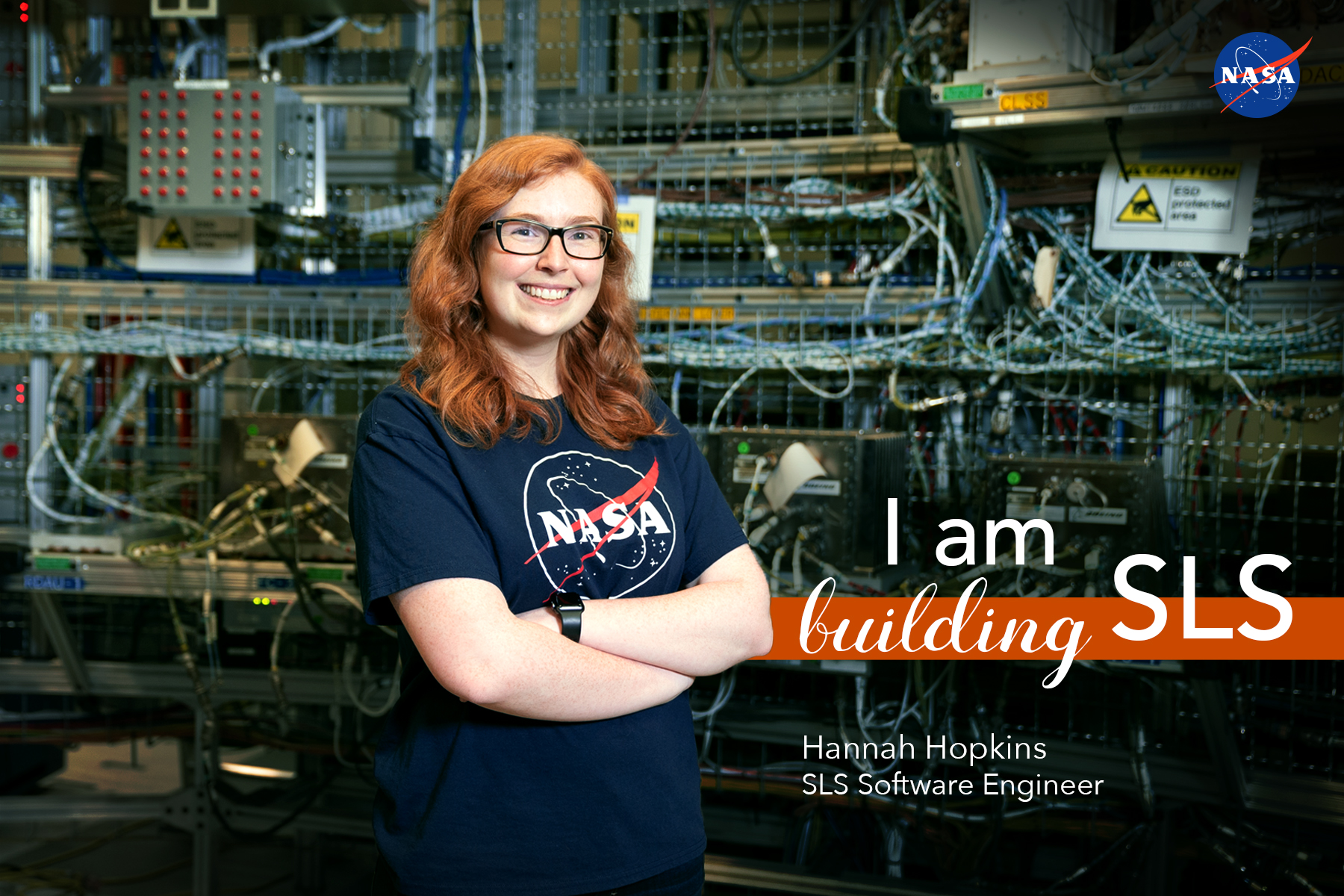I Am Building SLS: Hannah Hopkins
Most people don’t see the work and effort it takes in making a rocket launch, but that’s what I do every day. I have watched NASA’s Space Launch System (SLS) rocket launch hundreds of times. What I observed was not an actual launch but a simulation that we use for testing the rocket’s flight software and avionics. Seeing the rocket soar even on the simulation makes me confident that I will see the SLS rocket lift off soon on the Artemis 1 mission to the Moon.
I use my knowledge to look at the framework, or logistics, of running each of the minute details to make sure it all integrates and runs together smoothly. As a software engineer, I write code for the simulation named ARTEMIS (Advanced Real Time Environment for Modeling Integration and Simulation) software program to run simulations for the rocket launch and flight. The simulation allows my team at NASA’s Marshall Space Flight Center in Huntsville, Alabama, to fly the rocket virtually thousands of times. These nominal flights test the avionics and software that control the mission from 48 hours before launch through the 10 minutes after the launch of the Artemis 1 mission.
This attention to detail will help ensure a smooth Artemis 1 mission when the 5.75-million-pound SLS rocket leaves Earth and sends Orion on to the Moon. When I watch these simulated flights, I feel the same type of excitement for the Artemis missions as I believe the Apollo era generation did when Apollo first sent humans to the Moon. Knowing something that I have worked on is going to fly means the world, or the universe, to me. I see myself as a member of the Artemis generation. We are on the cusp of the future of space travel.
The simulation software allowed us to write code for many different scenarios that might occur during an SLS flight. That way we can makes sure the flight software and avionics work on launch day under various circumstances. This gives us a better understanding of how the software behaves and helps us prepare for undesirable consequences such as the loss of a flight computer. The rocket has redundant computers and avionics systems that help it navigate in space, so we want to test what happens if one system fails to operate correctly and another system takes over. Of course, we also test to see how the system works when everything goes perfectly as planned. If everything goes as planned, the real rocket will fly into space with no troubles.
Space has been a part of my life ever since I can remember. Growing up, my dance teacher was an extra in the movie Space Camp filmed at the US Space and Rocket Center in Huntsville. Her stories made space exciting and thrilling to me. She, along with my mother’s encouragement, inspired me to go to the University of North Alabama (UNA) in Florence where I got my undergraduate in computer science. I just completed my graduate degree in computer science at Georgia Tech in Atlanta. One day, I will watch my first rocket launch with a smile on my face knowing I helped it get there.


























